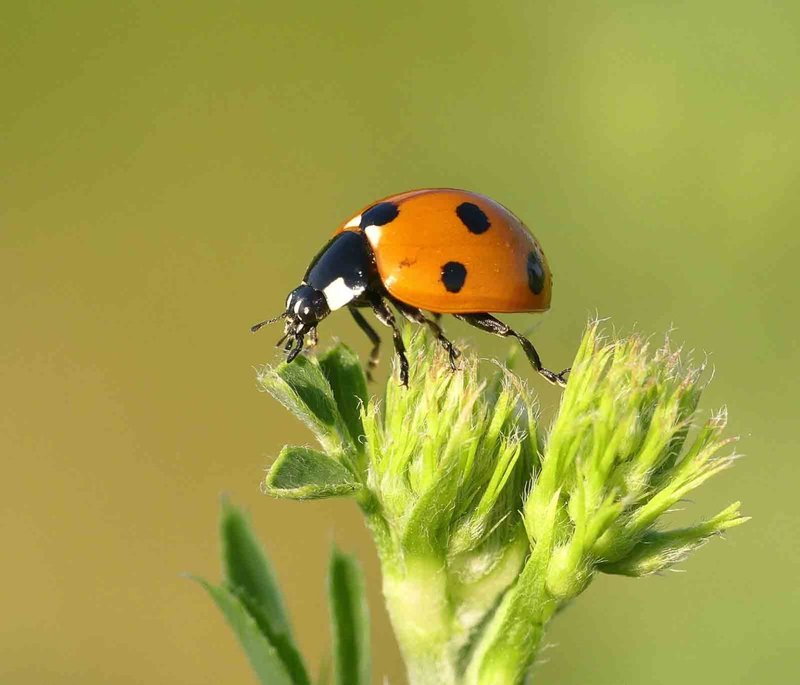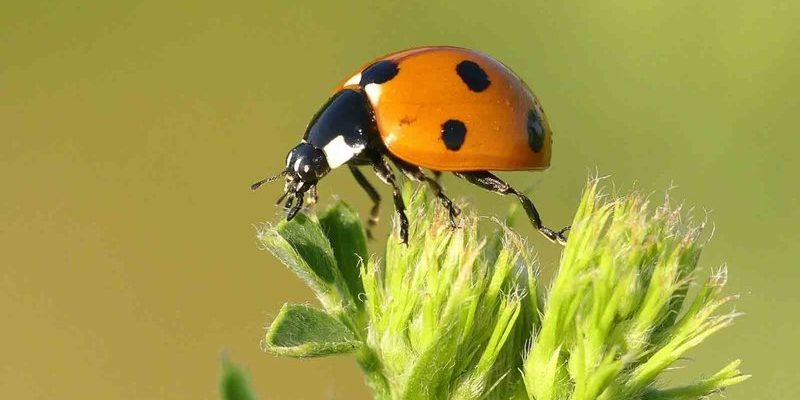
Ladybugs, also known as ladybird beetles, belong to the family Coccinellidae. The term “ladybug” comes from a time when farmers revered these insects as a gift from the Virgin Mary, or “Our Lady.” Think of them as nature’s pest controllers, bringing a little magic to our gardens. So, how did these small but mighty beetles evolve, and what makes them so unique? Let’s dig into their captivating journey through time.
A Brief History of Ladybugs
Ladybugs have been around for quite a while—about 250 million years, to be exact. They emerged during the Triassic Period, a time when the world looked very different. Back then, our planet was home to massive dinosaurs, and insects were just starting to diversify. The ancestors of modern ladybugs were probably small and not as colorful as the ones we see today.
As ages passed, ladybugs evolved, adapting to their environment and developing the striking colors we recognize now. You might not know this, but these bright colors aren’t just for show; they serve as a warning to predators. Many birds and other animals associate bright colors with bad taste or toxins. So, when a potential predator spots a ladybug, it often thinks twice!
Through the years, ladybugs have flourished in various habitats, from gardens to forests. They thrive in warm climates, but you can find them just about anywhere. This adaptability has helped them survive and evolve into the many species we know today. Isn’t it amazing how these little beetles have stood the test of time?
Species Diversity
Ladybugs aren’t just a single species. In fact, there are about 5,000 species worldwide! Most people recognize the classic red ladybug with black spots, but they can come in various colors and patterns. Some are orange, yellow, or even black. Each species has adapted to its environment, making them as diverse as the ecosystems they inhabit.
In North America, we often see the seven-spotted ladybug (Coccinella septempunctata) as the most common. But did you know that there’s also a twenty-two spotted ladybug? Or that the Asian lady beetle (Harmonia axyridis) has become quite prevalent, often invading homes in large numbers?
Understanding this species diversity is crucial for gardeners and nature enthusiasts alike. They play different roles in pest control, and some are more effective than others at managing aphid populations. If you’ve got a pest problem, knowing your ladybug species can help you choose the right allies for your garden.
Ladybugs in Different Cultures
Ladybugs have captured the human imagination across cultures. In many societies, they’re considered symbols of good luck. For instance, in *European folklore*, it was believed that if a ladybug landed on you, it meant good fortune would follow.
In some cultures, they’re even associated with harvests and fertility. Farmers would pray for ladybugs to visit their fields, as these insects are natural predators of pests that threaten crops. This belief reflects a respect for nature and its cycles, showing how deeply embedded these beetles are in our lives.
Kids love ladybugs too! Think about it: they’re easy to spot and colorful, making them popular subjects for storybooks and art. The innocence and charm of ladybugs make them relatable to children, teaching them about nature’s beauty and the importance of keeping our gardens healthy.
The Role of Ladybugs in Ecosystems
Ladybugs are more than just pretty faces; they play a vital role in our ecosystems. Their primary diet consists of aphids—those pesky little bugs that can demolish a garden if left unchecked. A single ladybug can consume up to 5,000 aphids in its lifetime! That’s like having a tiny pest control service right in your backyard.
They also help maintain the balance of various plant species. By controlling aphid populations, ladybugs contribute to healthier plants and promote biodiversity in gardens. This relationship illustrates the interconnectedness of nature; when ladybugs thrive, plant life flourishes as well.
However, not all ladybugs are created equal. Some species are better at controlling pests than others. For instance, the Mexican bean beetle can be a nuisance, primarily because it feeds on crops instead of pests. Understanding the role of different ladybug species helps gardeners make informed decisions about pest management.
Conservation and Threats
Despite their resilience, ladybugs face several threats today. Habitat loss due to urbanization and agricultural practices has reduced their natural environments. Pesticides can also take a toll, killing off ladybugs along with the pests they prey on. Plus, the introduction of non-native species, like the Asian lady beetle, can outcompete local varieties for food and shelter.
Conservation efforts are crucial to protecting these beneficial insects. Creating supportive environments can help. You can plant native flowers, avoid pesticides, and build habitats like insect hotels to attract ladybugs and other pollinators. It’s all about nurturing the balance of nature.
As more people become aware of their importance, our beloved ladybugs can continue to thrive. After all, who doesn’t want these charming little beetles buzzing around, keeping pests at bay and brightening up our gardens?
The Future of Ladybugs
Looking ahead, the future of ladybugs largely hinges on how we treat our environment. Researchers are studying ways to enhance ladybug populations and understand their behaviors better. They’re examining how climate change affects the habits and habitats of these insects.
By understanding these dynamics, we can develop strategies to support ladybug populations. This might mean introducing more native plants into our gardens, creating safer habitats, or even advocating for sustainable farming practices.
Remember, every little action counts. By caring for ladybugs, we’re not just helping them; we’re benefiting our ecosystems and our gardens, too.
Ladybugs have a rich history and a vital role in our world. Their journey from ancient times to our modern gardens highlights their adaptability and resilience. As we watch these tiny superheroes flit around, munching on pests, let’s remember the importance of protecting their habitats and ensuring they continue to thrive.
By nurturing ladybugs and respecting their place in our ecosystems, we can enjoy the beauty and benefits they bring to our lives. So the next time you spot one in your garden, take a moment to appreciate its incredible story—it’s a part of our world’s natural history.

